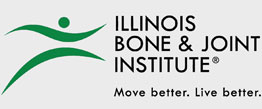Articular Cartilage Surgery
Cartilage repair is a surgical grafting procedure that replaces damaged cartilage with healthy cartilage from a non‐weight bearing joint. Cartilage repair is performed to correct joint deformities and restore the weight‐bearing capability of the affected joint.
Cartilage repair is indicated in patients with articular cartilage damage in the knee to restore normal functioning of the joint.
Articular or hyaline cartilage is the tissue lining the surface of the two bones in the knee joint. Cartilage helps the bones move smoothly against each other and can withstand the pressure of activities such as running and jumping. Articular cartilage does not have a direct blood supply so it has less capacity to repair itself. Once the cartilage is torn it will not heal easily and can lead to degeneration of the articular surface, also called osteoarthritis.
The damage in articular cartilage can affect people of all ages. It can be damaged either by trauma such as accidents, mechanical injury such as a fall, or from degenerative joint disease (osteoarthritis) occurring in older people.
Patients with articular cartilage damage experience symptoms such as joint pain, swelling, stiffness, and a decrease in range of motion of the knee.
Repair methods
Cartilage repair can be performed using various techniques depending on your particular situation and your surgeon’s preference.
Osteochondral Autograft or Mosaicplasty
This grafting technique is indicated in patients whose articular cartilage damage is less than 2 cm in diameter. In this procedure, the hyaline cartilage is harvested from a non-weight bearing joint of the same individual (autograft) and transplanted in a mosaic pattern to the damaged area. The cells in the articular cartilage grow in the damaged area to promote healing. This procedure can be carried out arthroscopically or through open surgery.
Osteochondral Allograft
This procedure is similar to osteochondral autograft but the graft is harvested from a donor (allograft) and transplanted to the damaged area. The graft is held to the damaged area with the help of two metal screws or pins. The main disadvantage of this method is limited availability of donor grafts. The allografts that are harvested are larger than the autografts but can be shaped to fit the area of defect. This procedure is not recommended for patients with osteoarthritis.
Autologous Chondrocyte Implantation (ACI)
ACI is commonly performed in patients with large cartilage defects. In this procedure, healthy cartilage cells are harvested arthroscopically from a non‐weight bearing part of the joint and grown in a laboratory for about 4 to 6 weeks.
The periosteal graft is harvested from the thick tissue of the tibia or shin bone using an arthroscope through a tiny incision. The next part of the surgery is done through a laser, open incision. Your surgeon sews the graft over the damaged cartilage and the cultured cartilage cells from the lab are injected under the graft to allow new bone cells to grow. The cultured cartilage cells will repair and replace the damaged cartilage.
The advantage of this procedure is that the harvested cells are taken from the patient’s own body (autograft) lessening any risk of transplant rejection.
Autologous Cultured Chondrocyte on porcine collagen membrane (MACI)
MACI is commonly performed in patients with large cartilage defects. In this procedure, a small biopsy of healthy cartilage cells are harvested from a non weightbearing area of your knee.
The biopsy of your cartilage cells (chondroyctes) are sent to a laboratory and embedded on a special collagen membrane. The membrane will be customized to match the size and shape of your cartilage defect which Dr. Durkin implants into the knee. The cartilage regenerates, forming a repair tissue that is able to fill the cartilage defect.
The advantage of this procedure is that the harvested cells are taken from the patient’s own body (autograft) lessening any risk of transplant rejection.
Postoperative Care
After cartilage repair, your doctor will recommend certain measures for you to follow to promote healing and return to normal function:
Wearing a knee brace – A knee brace is applied to immobilize the knee joint and promote healing.
Participating in Rehabilitation – Physiotherapists will instruct you in performing various exercises to strengthen your leg muscles and restore movement to the operated joint.
Risks and Complications
As with any surgery, cartilage repair is associated with certain risks and complications.
- Graft delamination – Detachment of the grafts from the subchondral bone and the surrounding cartilage.
- Allergic response, transfer of disease and infection, and graft rejection in allograft transplants
- Injury to healthy cartilage
It is important to understand that cartilage restoration can improve symptoms in the short to medium term but more definitive surgery may be required in the future.





